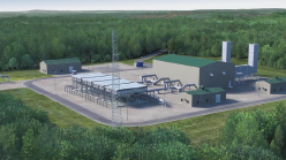Rate of Change alarms are used in modern SCADA systems to notify a gas controller of sudden changes in pipeline operating characteristics such as pressure and flow rate. This study evaluates the feasibility for using SCADA “pattern of alarms” techniques to identify ruptures in gas systems, similar to the SCADA “Rate of Change Combination (ROCC)” methodology used by the hazardous liquids pipeline industry. The concept of ROCC analysis studied here shows promise, based on the results of gas pipeline rupture monitoring under the conditions tested. It has the potential to be developed into an effective rupture monitoring tool, but more testing under real-world, complex-system configurations, in cooperation with suitable SCADA modeling experts, is needed to better understand the true viability of this adaptation of SCADA technology.
Since gases and liquids exhibit different physical behaviors under changing pressure and flow conditions (gas being compressible, liquids generally being noncompressible and affected by hydraulics) a direct correlation between the effectiveness in gas versus liquids systems cannot be correctly assumed.
This study addressed a very basic proof of concept, under known, controlled, very defined and limited conditions not typical of a real, complex gas pipeline system. Conditions from snapshots of known rupture data were taken from member operating companies to test the feasibility of applying the general theory to gas models. More effort is necessary to establish key sensor location requirements, normal operating parameters at each location, impact of system changes for weather, outages, no-notice customer load changes, reversal of flows, configuration changes such as by-passing and back-feeding, and numerous other system specific conditions requiring customized solutions.
Natural gas pipeline SCADA systems, under as-tested conditions and with further development, could address the NTSB recommendation stating that “providing automatic SCADA system trend data alarms of this type would improve controller recognition of abnormal conditions” (such as pipeline ruptures), and notify the controller to examine the condition and take the appropriate action to respond to it.
The ROCC methodology could also address the NTSB recommendation in NTSB Pipeline Accident Report NTSB/PAR-14-01 PB2014-103977 (Columbia Gas Transmission Corporation Pipeline Rupture Sissonville, West Virginia December 11, 2012) for a “simple yet effective way to reduce the burden on the controller to remember or analyze a series of data outputs”.





